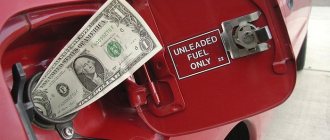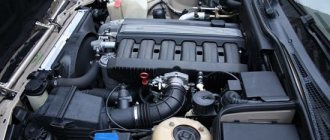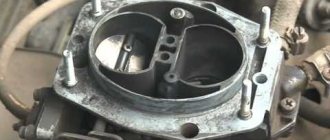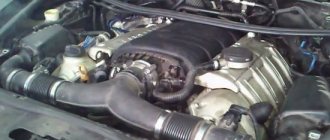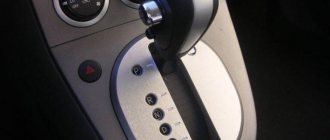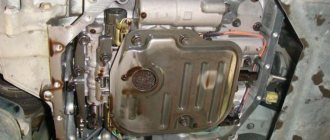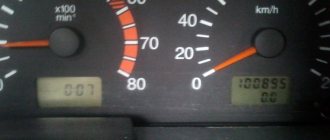Idling
A common phenomenon is floating idle speed when operating on gas; this occurs quite often after a recent change of injectors in the LPG system. And the fact that after replacing the injectors with new ones the car drove well for some time only confirms that this is precisely the problem. Or more precisely, the need for additional calibration of new injectors after the car has driven one to two thousand kilometers. If your problem is the unstable operation of the car at idle, after recently replacing the injectors, be sure to contact a specialist who will calibrate and configure the system.
Fine tuning
The other two cases out of our dozen, why the car jerks while driving, relate to a malfunction of the LPG itself, plus inaccuracies in the firmware of the electronic control unit. Problems with debugging the electronic control unit and erroneous calibration of injectors normally reveal themselves immediately, and if there is no suspicion of outside interference, then it is better to blame these factors as a last resort. If there is a need, the firmware can be reflashed, but with calibration you need to contact specialists.
ECU debugging is simplified by the fact that most modern devices have a huge number of different strategies and adaptations, including adaptation while driving, based on the vehicle’s on-board diagnostic system.
It is known and present in all instructions - with a normally adjusted LPG ECU, the injection time remains constant, whether on gasoline or on gas - achieving this is task number one.
A trivial reason - poor quality gas or the need for maintenance
Gas equipment of the 4th generation is considered the most common today; they are trying to install it on cars with an injection system. The system contains several filters. Some manufacturers install a coarse filter in the area where the tank is installed. Also installed in the engine compartment is a small filter element for coarse cleaning, as well as a fine gas filter. They need to be changed once every 20-30 thousand kilometers or every 2-3 years. If maintenance has not been done for too long, the filters are clogged, which will cause a decrease in fuel pressure in the system.
Regarding gas quality, it is worth remembering the following:
- bad gas is sold today at every second gas station, in Russia problems with fuel quality have not gone away, and this also applies to autogas, so you should carefully choose a gas station;
- cheap and dirty gas quickly clogs filters, they lose capacity and actively reduce the quality of vehicle operation, as they do not perform their functions normally;
- poor fuel burns worse than required by a gas installation, which also causes unpleasant features in the operation of the car, power is lost, and the quality of the car’s performance deteriorates;
- consumption increases, since the driver has to constantly press the pedal in order to drive normally; under normal conditions, traction on gas and gasoline is almost the same, if there are no other breakdowns;
- at low and idle speeds the car does not understand what to do, the computer either increases or decreases the speed, trying to balance between stopping the engine and an emergency situation.
You can fill up bad gas even at a very good gas station. No one is immune from troubles that can happen with fuel. It is worth choosing one station where propane is not too cheap and also suits you in terms of quality. It is at this gas station that you should refuel in the future. Experiments with the quality of gasoline may pass without a trace, but you will immediately feel the quality of gas in your car and experience the most unpleasant emotions in operation. This is important to remember when choosing a gas station.
Sensors - look towards electronics
The second reason for a car jerking on gas is the sensor system. In the 4th generation, several sensors are installed that transmit information to the ECU or to its own computer. The set may differ in different generations and modifications. For example, there is a gas mixture pressure sensor that controls the operation of the gearbox and supplies the mixture to the injectors. It is this that often causes problems with the car twitching at idle or low speeds. This sensor is also called a MAP sensor; it often fails.
The problem algorithm develops as follows:
one of the parts of the MAP sensor burns out, which is responsible for measuring the gas pressure in the system, and also measures the temperature in more modern installations, which is also important for normal operation; further operation on gas becomes arbitrary, the speed can float or stop in any position, despite the optimal travel mode and good gas filling; the next stage - the sensor misses the readings of the mixture temperature, which causes the supply of fuel to the injectors that is not heated to the optimal temperature, this also causes combustion problems; the pressure on the injectors drops to critical values, and sometimes the supply is cut off altogether, this leads to an emergency switch to gasoline and errors in the gas system sensor system; This damages the sensor even more, the operating parameters of gas-cylinder equipment become unclear, and you have to drive on gasoline until visiting a service station.
But the MAP sensor is not the only electronic part that causes such unpleasant operating features of the car. There are also a number of other sensors, the set of which greatly depends on the manufacturer and modification of the LPG systems. If you have a low-cost setup, you can simply replace the sensor kit. If the cost of automation is high, it’s worth going for diagnostics and finding out which parts are causing problems in your car’s system. This way you will save money on buying unnecessary parts.
Does it jerk when moving?
It often happens that a completely new and apparently intact car with gas-cylinder equipment, which starts perfectly when hot, suddenly behaves strangely when accelerating: it jerks when moving, tears, jumps at medium speeds, as if at zero. And the tank is full of fuel. And you were lucky if you didn’t have time to drive far from the gas worker while accelerating, however, according to the law of the sandwich, it usually jerks into the heat completely inopportunely - in the wilderness, or when climbing a mountain. If you switch to gasoline, the breakdown disappears.
The problem, of course, will not be resolved by itself and, in an amicable way, the car will need to be diagnosed. But there is a temptation to tinker with it yourself.
Before disassembling the gas system, make sure that the car runs smoothly on gasoline, both at idle and when hot.
Bad fuel
Unfortunately, low-quality fuel can often be the cause of failures during acceleration. For example, if there is water in it. Of course, an engine running on such fuel will run intermittently. There are two ways out. If you are “lucky enough” to fill a full tank with such “fuel”, then it is better not to be lazy and drain it so as not to ruin the injectors and fuel pump. Or be patient and simply produce low-quality gasoline or diesel.
If the fuel pump is worn out or clogged, the receiver screen can also cause rough engine operation.
If the fuel pump is worn out or clogged, the receiver screen can also cause rough engine operation.
False HBO problems
Engine problems similar to the ones listed above can occur for completely different reasons. Namely:
- Malfunctions of the ignition system.
- Problems with the piston system, weak compression.
It is important to separate them immediately so as not to try to repair a working LPG system. This is easier to do on a car with a gas-gasoline dual fuel system.
All you have to do is switch to gasoline. If the engine runs normally on it, then there is almost a 100% probability that there is a problem with the gas system.
However, there is a nuance. The parameters “sufficiently normal ignition operation” and “sufficient piston compression” for engine operation on gas and gasoline may differ slightly.
Why does the engine of a VAZ 2109 car troit?
The reason that troit 2109 occurs is uneven combustion of fuel in a single cylinder. The reasons for this may be:
- The ignition timing is set incorrectly.
- There has been a malfunction in the vacuum corrector system for ignition distribution or in the carburetor accelerator pump.
- The spark plugs have become unusable.
- A high-voltage wire has broken.
- Capacitor failure.
- There is a leak in the intake manifold or carburetor.
- Burnt pistons or valves.
- The piston rings are broken.
- Valves incorrectly adjusted.
- The gasket in the cylinder head has broken.
- Worn, hardened or broken.
- Use of very low quality fuel.
- The carburetor is not adjusted correctly.
- The distributor shaft and the rotary plate bearing are worn out.
- The membrane of the vacuum ignition accelerator has lost its tightness.
- There are other reasons why the engine of the VAZ 2109 troits.
Advice: You can determine which cylinder has stopped working by removing the high-voltage wire from the spark plugs one by one, but the work must be done very carefully so as not to cause an electric shock. Place a wooden or rubber stand under your feet, take only clean and dry rags, remove them only by holding the wire, but not the cap, do not touch the car body during manipulation. To check, you need to increase the idle speed to 1500 rpm using a choke and remove the spark plug caps one by one. A drop in engine speed indicates the serviceability of the cylinder; there are no deviations - the cylinder does not work.
How to eliminate some causes of engine tripping
If during the initial period of movement of a VAZ 21093 car the engine stalls, most likely the accelerator pump or the vacuum corrector of the ignition distributor has broken down. In this case, diagnostics of components is carried out and, if necessary, repair or replacement of elements. To work you will need:
- Wrenches for “10” and “8”.
- Slotted and Phillips screwdrivers.
- Clean rags.
- Copper wire without an insulating layer with a diameter of up to 0.3 mm.
- Compressor.
- Liquid type WD40.
Order of operations:
- The cover is removed. To do this, unscrew the nut with a “10” key and unfasten the spring clips.
- The air filter is pulled out. Use a key “8” to unscrew the four nuts, use a screwdriver to loosen the clamp on the crankcase ventilation hose at the place where it is connected to the valve cover and remove the housing from the air filter.
- The hose is disconnected from the vacuum corrector drive for ignition distribution. The tightness of the assembly is checked by creating a vacuum of air through the mouth.
- If air passes through, the unit needs to be replaced. Otherwise you need to:
- Look inside the carburetor.
The air damper must be completely open. When you press the throttle control lever, a stream of fuel should appear from the two nozzle tubes of the accelerator pump. They should be smooth, directed into the space between the opening damper and the diffuser wall. The photo shows the holes for the fuel outlet.
Advice: If trickles appear, it is better to contact a car repair shop to diagnose the unit.
- If there is no fuel outlet, you need to remove the hoses supplying fuel to the carburetor and drain it.
- The torso is detached to control the air damper.
- The wire located on the idle air solenoid valve is removed.
- Unscrew the screws holding the top carburetor cover.
- The lid is removed and placed with the floats facing up.
Advice: Damage to the floats must not be allowed.
- Carefully pry off the atomizer with a screwdriver and pull it out of the socket.
- Use a thin copper wire to clean the atomizer nozzle holes.
- The atomizer is blown with air in the opposite direction of the direction of fuel movement.
- The element is installed in place.
- Without installing the assembly cover, you need to press the drive lever for the throttle valve. Fuel streams should appear from the two nozzle tubes of the acceleration pump.
- If they are not there, you need to check the absence of play in the drive and the accelerator pump drive lever and its ease of movement. To facilitate work, the parts are lubricated with WD40 type fluid. Parts that have become unusable are replaced with new ones.
- The operation of the accelerator pump is re-checked.
- The carburetor is assembled in reverse order.
- If there are no streams again, you need to contact a car service.
The reason that the engine in a VAZ 21093 car is experiencing trouble may be an abnormal condition. Their price is insignificant and it is better to replace burnt out spark plugs immediately.
This video will help you learn how to change spark plugs yourself. So:
- The operating instructions supplied with the car indicate that the spark plugs should be replaced regularly. Even the presence of a spark on a twisted element at atmospheric pressure does not mean that it is fully operational. Its ignition occurs under more difficult conditions.
- It is not very common for piston rings to get stuck or break. You can check this by measuring the compression. If it is low, then a cylinder head malfunction can be ruled out in a simple way: a little oil is poured into the cylinder and an increase in compression indicates a breakdown in the piston system.
Any malfunction when tripping the engine of a VAZ 2109 car must be corrected in a timely manner. Then the power unit will be reliably operated for quite a long time.
What to do if the VAZ 2109 engine starts to stall? This problem is very common, and there can also be many reasons for engine tripping. When they say that the engine is tripping, they mean that one cylinder of the engine is not working. Because of this, an imbalance results, which is easily determined by ear: the engine runs evenly, but with failure. This failure occurs on a non-working cylinder of the VAZ 2109 engine. Why might the cylinder not work? And in general, what does “cylinder not working” mean? We all know that an internal combustion engine contains working cylinders inside which the combustible mixture burns. During the combustion of the combustible mixture, positive work occurs when the gases expanded as a result of combustion lower the piston down, turning the crankshaft. If all four cylinders are working, then the engine speed is even, this can be seen on the tachometer and audible. And so, if for some reason the mixture does not ignite in one cylinder, or positive work is not done to lower the piston, then the engine stalls. Then the economizer needle will begin to twitch and the VAZ 2109 engine speed will be unstable. Reason for engine tripping No. 1 - a spark is not supplied to the cylinder: a) Faulty spark plug of the VAZ 2109. The spark plug may be pierced into the housing, or the spark plug may have an incorrectly set gap. To check the serviceability of the spark plug, it is unscrewed from the engine and leaned against the ground. Then, turning the starter, visually check for the presence of a spark on the spark plug. Naturally, the candle must be held with pliers, or even better, with pliers wearing rubber gloves. Anyone who has already received a 20 kV discharge will agree that safety is never superfluous.
Why does the 4th generation HBO twitch?
In most cases, the reason is in 3 nodes:
- ECU. Setting up a fuel map involves correcting its cells by a certain factor in comparison with a gasoline fuel map due to different octane numbers and combustion times. If a car jerks with a 4th generation gas system , it means that the gas supply from the gearbox and injectors is incorrectly synchronized at different engine speeds. You can change the firmware or re-configure it on the bench;
- injectors. If HBO 4 jerks at low speeds, then the problem is in the calibration of the jets or a problem with the operation of the rod (sticking, not full stroke). If the nozzle is non-separable and purging (ultrasound cleaning) does not help, it must be replaced. In collapsible ones, you can replace the coil or rod;
- gearbox If the gasket freezes or the membrane becomes rough, the outgoing pressure decreases and interruptions in the gas supply occur. Adjusting the 4th generation HBO on the ECU and replacing the repair kit solves the problem.
In other cases, the cause of a malfunction of the HBO 4 may be clogged lines or filters. It is advisable to change filters every 10-12 thousand km. After the first replacement, disassemble the filter to see how dirty it is. The mains are blown through at the service station.
Timely maintenance of 4th generation gas equipment allows you to promptly identify and eliminate potential problems. At the first signs of deviation from the norm, come to a service station, where modern diagnostic equipment will help you accurately determine the causes.
Service station KOSTA GAS offers LPG car service for all car models. STO is the official representative of AEB in Ukraine: the bench equipment meets the standards of the AEB plant, the qualifications of employees are constantly confirmed by certification. The service station is engaged in the sale and installation of gas equipment in Kharkov of 4-6 generations and gas-diesel systems. HBO prices without intermediary markup, each customer has a gift - an insurance policy for 100 thousand hryvnia!
The problem is not with HBO
Quite often it happens that the car jerks on the gas while driving not at all because of the gas equipment, as the driver thinks, but because of a malfunction in the electrical part of the car.
Most often, drivers identify the following problems:
- The gap in the spark plugs and their overall serviceability. It is believed that the optimal gap should be in the range of 0.7-0.9 cm, although some car enthusiasts set the gap on the spark plugs up to a value of 1.1. There are also special spark plugs for running cars on gas; they differ from regular spark plugs in their clearances and design. When a spark plug is faulty, it simply “breaks through”, as a result of which the current follows the path of least resistance.
- High voltage wires. The second most common problem is the wear and tear of the car's high-voltage wires. If your armored wires have traveled more than 80,000 km. without replacement, it is best to replace them with new ones. An experienced electrician will help identify the malfunction of one wire.
- The third most important problem is the problem with the car’s ignition coil; if there is a problem with it, the coil should be replaced with a new one.
- Gas mixture. The quality of the mixture can also have a serious impact on the car's behavior. Try changing the gas station to another.
Gaza Strip
Faults in gas equipment, as a rule, accumulate during operation. Mostly they relate to air leaks that occur through the connections of the entire gas equipment, in dried out or frayed hoses, in a deformed gearbox gasket, due to systematic freezing. It must be said that a good gas-air mixture is a mixture whose proportion normally corresponds to the optimal value for combustion. There should be 16.5 air per part of gas.
Otherwise, the mixture will either be thicker, increasing fuel consumption, or less often, depriving our car of its legitimate design agility and adding the notorious twitching.
With such symptoms, it would not be superfluous to check the car for tightness of the intake manifold from excess air.
The main reason for the car “jerking” when you press the gas pedal
The main reason is most often associated with an oxygen-rich/oxygen-depleted fuel mixture. It is because of the lack of air that the crankshaft continues to rotate despite the fact that the gas pedal has long been released. In addition, when the pedal is pressed sharply, the motor begins to twitch and rotate in place.
The root cause of the problem is preparing the wrong mixture. In turn, the mixture can be supplied to the engine in different proportions due to malfunction of other devices and components of both the engine and the fuel system.
Car jerking due to TPS malfunction
TPS is a special sensor that regulates the position of the throttle valve. It is quite simple to understand that the malfunction is connected with it - the engine begins to “jump” even when the accelerator is gently pressed. The process of jerking is as follows:
- The throttle remains ajar for a long time;
- After this, during acceleration, a faulty throttle position sensor belatedly transmits a signal to the on-board computer of the car;
- As a result, the car’s engine cannot quickly switch from idle to full speed in load mode, after which fuel is supplied in large quantities and sharply into the combustion chamber;
- The result is a sharp decrease in pressure in the fuel rail design. The engine will run jerkily at first, and then completely stall.
This type of malfunction can often be found in vehicles with injection engines. Both domestic cars (Lada Priora, Lada Vesta Cross, Lada Granta) and foreign car models (for example, the same Ford Focus) are not immune from this. In this case, there is only one solution - go to a car service center, where they will replace the faulty sensor.
Advice: do not try to solve the problem yourself by repairing a faulty TPS. As a rule, after repair, a previously faulty mechanism can last no more than 1-2 months.
Car jerking due to a malfunction of the mass air flow sensor
Mass air flow sensor
The second sensor that affects the air supply to the system is a device for regulating the mass flow of oxygen in the system. It works in injection-type engines and is responsible for supplying air during the formation of the fuel mixture. If this component is faulty, then your car will also twitch before it even has time to accelerate. The solution is similar with the first sensor - dismantling and completely replacing the mass air flow sensor.
Car jerking - malfunction in the carburetor chamber and pump
If the engine starts to run jerkily in carburetor cars even when the gas pedal is lightly pressed, the main attention should be focused on the carburetor chamber. The problem is often associated with clogged outlets, which are located in the first of the carburetor chambers.
When the fuel enters the engine, it takes with it some of the soot and metal shavings, as a result of which the mixture undergoes changes and the engine operates unstably. You can solve this problem yourself - just remove the carburetor and blow out all its pipes and holes with compressed air.
A classic example is the following situation: when replacing the front wheel bearing on a VAZ-2109, the pump was damaged. As a result of the failure of the carburetor accelerator pump, the mixture is supplied to the engine in an incomplete volume. The result is the appearance of jerks during even a smooth attempt to move away. In most cases, it seems impractical to repair pumps, which is why they are simply replaced at a car service center.
carburetor chamber
Gearbox, hit idle
If the engine jerks at idle, then it makes sense to clean (replace) the valve and adjust the idle speed. You also need to inspect the screw on the gearbox. Due to an accidental shift, a pressure drop occurs and, as a result, jerks. If the car jerks, you will have to reconfigure the gearbox and try to achieve clarity at idle. The gearbox may not warm up as required. Then you need to evaluate the path of antifreeze for kinks and circulation.
If the issue is not resolved by tuning, then all that remains is to completely change the repair kit in the gearbox so that the idle speed no longer bothers you.
Speaking about wires, it should be noted that it is not always possible to identify their disease using the traditional method - we look at how the engine behaves in the dark. Why, if the armored wires are not “fresh”, then they also need to be replaced. If possible, it would not hurt to first measure their resistance and check for breakdowns.
twitches on the gas
twitches on the gas
by kidrok-ok » April 24, 2013, 01:03 pm
Re: jerking on gas
VAL090 » 24 Apr 2013, 13:05
Re: jerking on gas
by Nahnagel » Apr 25, 2013 7:16 pm
I noticed that my HBO (also 4th generation) really likes: - frequent replacement of spark plugs - clean air filter - clean gas filters (small toroidal and large).
Re: jerking on gas
Podmoskvich » April 25, 2013, 20:27
Re: jerking on gas
by Nahnagel » Apr 26, 2013 10:46 am
can you give more details here? This is the first time I've heard this. Which one is needed for our clergy?
The problem is in HBO
If all of the above options have been checked, and when you sharply press the gas pedal, the car jerks while driving as before, then you should look for the problem in incorrectly configured or failed gas equipment. Basically, the problem with gas equipment lies in unregulated air leaks, which results in jerking of the car. To identify such a malfunction, you should take a closer look at:
- Connections of all gas elements. Due to long-term operation, depressurization of the connecting elements of the system is possible.
- Lines and rubber hoses that may dry out due to active use.
- "Anti-clap." You need to carefully check the cotton elastic and the installation location.
You can identify the location of air leaks by “washing” all of the above system elements. If a defect is detected, the hoses or connecting elements should be replaced, and then the tightness of the system should be checked again.
It would be a good idea to make an appointment with an experienced diagnostician, who, by connecting the car to a computer, will identify problems with the ECU settings, calibrate and clean the injectors, and also identify other possible problems.
One of the possible options for the fact that the car jerks when you press the gas pedal while running on gas may be that maintenance of the LPG system was not carried out in a timely manner. We recommend that you undergo maintenance at least once every 10,000 km, and in the case of 2nd generation gas equipment, drain the condensate from the gearbox and change the gas filter 2 times a year.
Don’t wait until your car refuses to move at all; the first time you notice that the car is jerking on the gas, try to solve the problem as soon as possible and do not put it off so as not to aggravate the situation.
Main causes of malfunctions
Below we will highlight the main reasons for the malfunction of the 4th generation LPG, which are quite common, but first of all, before looking for the reasons in the gas installation, you should make sure that the car runs stably on gasoline.
The reasons for unstable LPG operation are not always related to gas; first, pay attention to such vehicle components as spark plugs and high-voltage wires. Quite often, these elements influence incorrect operation and lead to the fact that a car equipped with a 4th generation gas system stalls or loses power.
Engine speed fluctuates on HBO
There are several reasons why the engine does not idle when running on LPG:
- The first thing you need to do is eliminate the electrical component (spark plugs and high-voltage wires);
- If you have not changed gas filters for more than 10,000 km, you should replace them.
Pay attention to the article: Do-it-yourself replacement of gas filters with 4th generation gas equipment. The article describes in detail the step-by-step procedure for replacing filters with photo and video materials.
- The third reason may lie in wear, contamination, incorrect calibration, or completely incorrectly selected injectors.
- The cause may also be wear and tear on the evaporator gearbox itself.
We described several more reasons why the speed on HBO 4 fluctuates in this article.
Loss of engine power when operating on LPG
- Problem with gas injectors (contamination, wear). If cleaning the injectors does not help, you will most likely have to use a repair tool. complete set or replace it. It is quite unlikely that the injectors were miscalibrated. This reason may occur after the installation of new parts and after one to two thousand kilometers. In this case, you need to calibrate.
- The evaporator reducer may not warm up well and, as a result, may not produce the pressure required for operation. Be sure to check the coolant level and possible air pockets in the cooling system.
- If an oxygen sensor fails, it can affect the loss of engine power when running on gas. Most likely, if the lambda probe fails, the “Check engine” sign will light up on the instrument panel.
- Air filter.
- Air leaks due to wear of rubber pipes or leaky connections.
- The cause of clogged gas lines seems unlikely, but given the quality of gas at our gas stations, it is also quite possible.
The engine does not switch from gasoline to gas
If a gas car switches to gasoline, or there is no automatic switch to gas at all, there are several reasons:
- Malfunction of the temperature sensor, which is located in the gas reducer.
- Insufficient heating of the gearbox (possible reasons: low level of coolant in the system, air lock, freezing of coolant at low negative air temperatures).
Read more about the problem of not switching from gasoline to gas here.
Excessive gas consumption
In order to understand whether there is excessive gas consumption, you should calculate what consumption is optimal for your car. In the article about gas consumption by Lanos and Sens cars, we described in detail how to calculate the rate of gas consumption in summer and winter.
- Increased gas consumption can be caused by several factors, namely:
- Worn, dirty or incorrectly calibrated gas injectors.
- Clogged or dirty air filter.
- Problems with the gearbox (not warming up enough, physical wear, requires adjustment).
- The oxygen sensor does not work.
Non-standard situation
Failure of the camshaft position sensor of a VAZ 2110 with an injection engine switches the internal combustion engine from distributed to pairwise-parallel injection. Accordingly, the injection time of gasoline injectors is reduced from 4.5 to 2.7. In this case, there are no fault signals (check engine).
The wire through which the LPG electronic control unit reads engine speed pulses is often connected specifically to the DPRV. When switching to gas, the controller does not receive a signal from the sensor and the car begins to twitch.
Main causes of malfunctions
Below we will highlight the main reasons for the malfunction of the 4th generation LPG, which are quite common, but first of all, before looking for the reasons in the gas installation, you should make sure that the car runs stably on gasoline.
The reasons for unstable LPG operation are not always related to gas; first, pay attention to such vehicle components as spark plugs and high-voltage wires. Quite often, these elements influence incorrect operation and lead to the fact that a car equipped with a 4th generation gas system stalls or loses power.
Engine speed fluctuates on HBO
There are several reasons why the engine does not idle when running on LPG:
- The first thing you need to do is eliminate the electrical component (spark plugs and high-voltage wires);
- If you have not changed gas filters for more than 10,000 km, you should replace them.
Pay attention to the article: Do-it-yourself replacement of gas filters with 4th generation gas equipment. The article describes in detail the step-by-step procedure for replacing filters with photo and video materials.
- The third reason may lie in wear, contamination, incorrect calibration, or completely incorrectly selected injectors.
- The cause may also be wear and tear on the evaporator gearbox itself.
Loss of engine power when operating on LPG
- Problem with gas injectors (contamination, wear). If cleaning the injectors does not help, you will most likely have to use a repair tool. complete set or replace it. It is quite unlikely that the injectors were miscalibrated. This reason may occur after the installation of new parts and after one to two thousand kilometers. In this case, you need to calibrate.
- The evaporator reducer may not warm up well and, as a result, may not produce the pressure required for operation. Be sure to check the coolant level and possible air pockets in the cooling system.
- If an oxygen sensor fails, it can affect the loss of engine power when running on gas. Most likely, if the lambda probe fails, the “Check engine” sign will light up on the instrument panel.
- Air filter.
- Air leaks due to wear of rubber pipes or leaky connections.
- The cause of clogged gas lines seems unlikely, but given the quality of gas at our gas stations, it is also quite possible.
https://youtube.com/watch?v=ZD4yBUYM4Jw
The engine does not switch from gasoline to gas
If a gas car switches to gasoline, or there is no automatic switch to gas at all, there are several reasons:
- Malfunction of the temperature sensor, which is located in the gas reducer.
- Insufficient heating of the gearbox (possible reasons: low level of coolant in the system, air lock, freezing of coolant at low negative air temperatures).
Read more about the problem of not switching from gasoline to gas here.
Excessive gas consumption
In order to understand whether there is excessive gas consumption, you should calculate what consumption is optimal for your car. In the article about gas consumption by Lanos and Sens cars, we described in detail how to calculate the rate of gas consumption in summer and winter.
- Increased gas consumption can be caused by several factors, namely:
- Worn, dirty or incorrectly calibrated gas injectors.
- Clogged or dirty air filter.
- Problems with the gearbox (not warming up enough, physical wear, requires adjustment).
- The oxygen sensor does not work.
Didn't you see the entrance?
To detect a breakdown, it is necessary to supply a smoke mixture under pressure into the system. And soon the inlet location will clearly reveal itself. You can normally “wash” all questionable surfaces and connections the old fashioned way. The “wounded” node will have to be updated.
Excess air can also enter in a “legal” way, through the air filter. To reduce it, a bushing is placed in the supply hose. When returning to gasoline, the bushing is removed. By the way, without monitoring the antifreeze level, when it decreases, the gearbox circuit mainly suffers. As a result, the gas does not have time to evaporate and remains in a liquid state.
So it turns out that our car is our car. And only we are responsible for its maintenance. Either we do it ourselves or we insist that the master correct his oversights efficiently.


